Gille de Vlieg who has previously worked in collaboration with SAHA, particularly on the Land Act Project, has given some of her photographs, especially for youth day, to be added to her collection (AL3274) housed in the archive. This year youth day falls on the 40th anniversary of the Soweto Uprising of 1976. This group of images is centered on youth and the role of youth in bringing down apartheid. Gille is a photographer; anti-apartheid activist; a member of the Black Sash and former Afrapix photography collective member. The archival team was lucky enough to sit down and discuss the context of some of her photographs with her.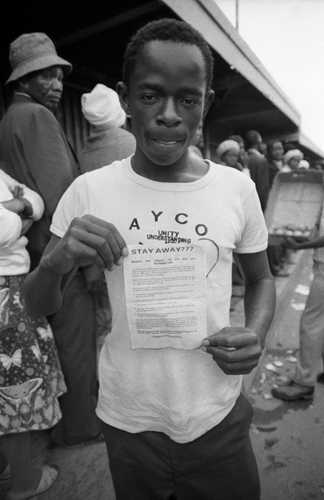
The famous image of Hector Peterson by Sam Nzima is the symbol of youth day and the struggle of the youth against apartheid. Gille spoke about how several marches by the youth were not organized by political parties. ‘What happened in 1976 is that the youth 'lost their fear', and so perhaps we should remember that this protest is owned by the youth and not by any political party. While there were political influences at play it was mainly Bikos’ Black Consciousness that was a driving force. History teachers also played a strong role and it was an acknowledgement of the students own culture and history. In some areas the use of tahe names given to them by their family, rather than anglicized or Afrikaans ones, gave students a sense of pride that gave them the strength to protest. Today these non political party affiliated events are increasingly appropriated by the ANC.
Gille made an observation during the interview that, although students are depicted as the ones initiating resistance, the spontaneous resistance began in 1950s with women refusing to take out 'passes'. Gille reflected that women’s history 'always gets buried under other histories'. The resistance of students echoed that of the women’s marches which were “a spontaneous rebellion born out of necessity.'
Gille's reflections on June 16 are that it shouldn't be owned by any political party. She asks people today “…what has changed and have we achieved what those youngsters fought for?” Now Youth Day is a politicized day claimed by the ANC which is an appropriation of history. What these images contribute to the role of the youth in the anti-apartheid struggle is that it was not confined to the 1976 uprising. The youth of South Africa contributed immeasurably to the overthrow of apartheid. 1976 however was an important turning point and it is hoped that the youth of today are able to ignite some of that same spark in order to achieve the educational demands of that time. May the youth of today fight for their rights and be a part of South Africa’s active citizenship.
The following images speak to the youth and their part in contributing to the resistance against apartheid outside of the June 16 Soweto uprising.
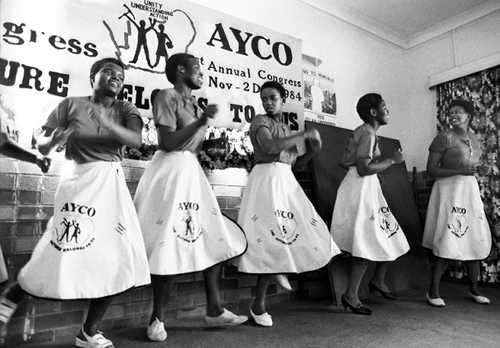
This image (AL3274_B34) is at an Alexander Youth Congress (AYCO) conference, in December 1984. It was hosted at Wilgespruit at a venue that was supportive of anti apartheid organisations. Gille is particularly fond of this photo.
“…one of the images they [young women] are dancing and their AYCO skirts are swirling around, not a very common image depicting youth resistance. Usually one sees youth marching in the street with their fists held high and these women are actually enjoying their dancing.”
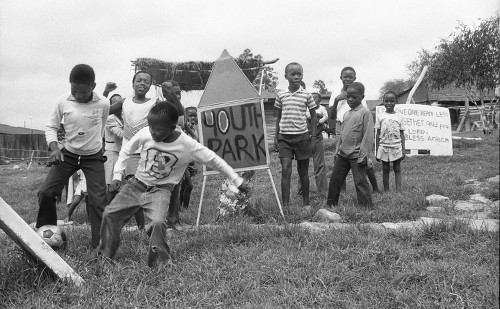
Here (AL3274_D36) we have an image from Alexandra, Johannesburg in 1986 of another type of movement - a peace park. This was an attempt to decorate areas in which people lived and to take control of open areas. Community members built and decorated these spaces. The youth were effective participants in this process.
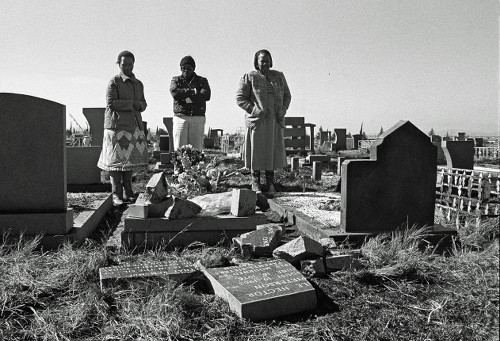
This photograph (AL3274_G47) taken by Gille in 1989 portrays Hectors’ shattered tombstone. To this day, it is not known who destroyed it or why. Gille reflected on the Hector Peterson memorial which consists of a granite slab. She felt a monument incorporating the stones from the area, used by the students in the uprising, would be a much more meaningful way of honoring and remembering 1976.
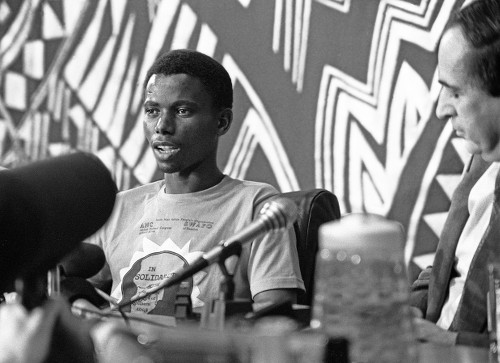
In this image (AL3274_E14), 22 year old Naude Moitse is giving evidence at the 1987 International Children’s Conference in Harare to testify to the international community the appalling system of apartheid. He spoke of how the South African government was clamping down harshly on the youth of South Africa.
Funerals and death were an unfortunately common part of the Struggle and it is especially sad how young many of those who killed were. Many of the images Gille took were at funerals.
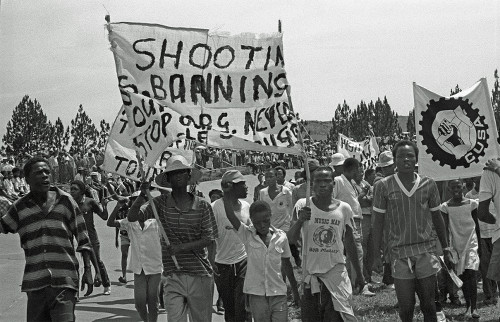
At this 1986 funeral in Mamelodi (AL3274_C46), for those killed by a police attack on a peaceful gathering, we are able to see young people who had brought a homemade banner which was made of material from rice sacks.
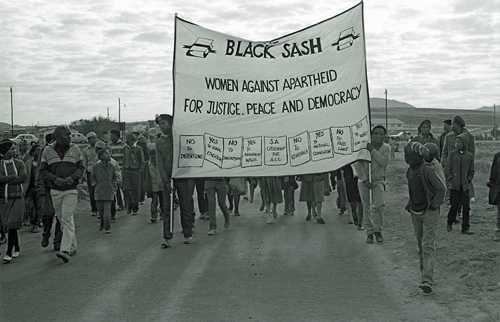
Gille, along with the Black Sash attended the funeral of the Cradock Four in Lingelihle. She recounted how the “youth came running up and took the banner to march to the stadium with the Black Sash banner.” She also remembers that this was the first time the South African Communist Party (SACP) banner had been seen since the banning of the SACP in 1960. (AL3274_C45)
For more of Gille de Vliegs work or resources on youth struggle see the links below
The Gille de Vlieg Photographic Collection (AL3274)
The SAHA Original Photograph Collection (AL2547)
The SAHA Virtual Exhibition: Commemorating the youth struggle
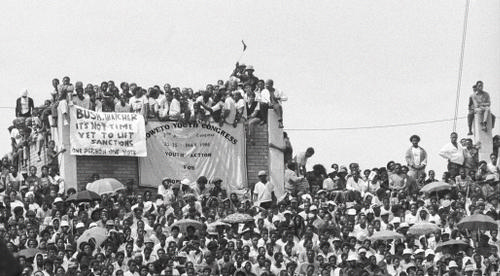
Youth sitting on top of a high wall during a welcome home Rally for Mr Nelson Rolihlahla Mandela in Soccer City, 1990-02-13 AL2878_H01.31












